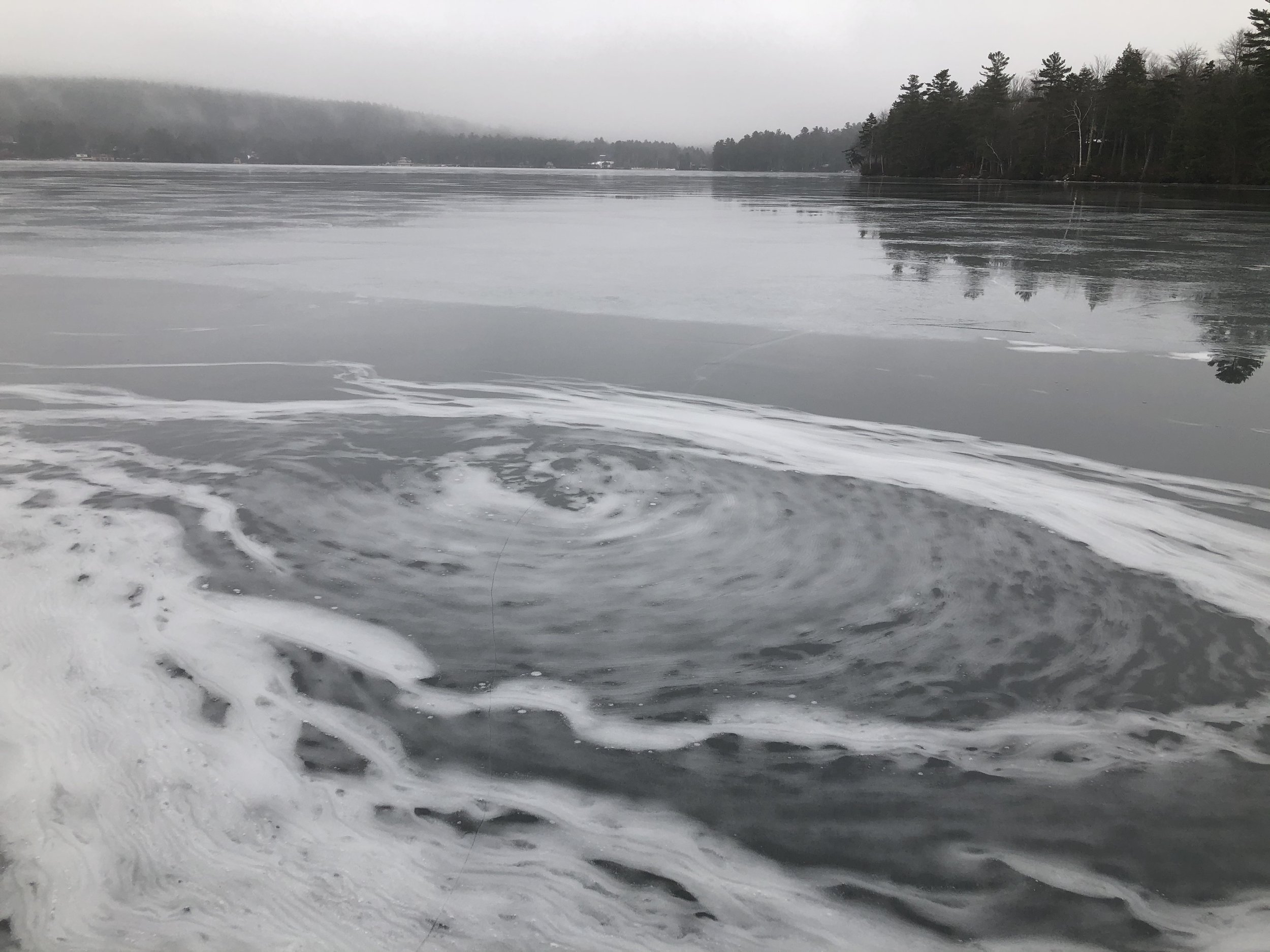Drain Holes & Slush Swirls
Drain holes allow water to move through the ice. The water can move in either direction. When it rains, water from surface puddles flows down under the ice, because water is denser and heavier than ice. (See video below.) When it snows, the weight of the snow presses down on the ice and forces water up through the drain holes; once all the snow has melted, the pressure equalizes and the drain hole freezes over into new black ice. (Photos at right.)
On snow-covered ice, when water flows up through a drain hole, it turns the snow to slush and then carves channels in the slush as it fans out, making the drain hole look like an octopus.
Slush swirls (bottom of page) begin their life as a floating mat of slush that forms in an unfrozen lake during a snowstorm. The mat is then blown by the wind and the slush is compressed like an accordion. Eventually the slush freezes solid in wild and wonderful patterns and shades of gray, white and black.



